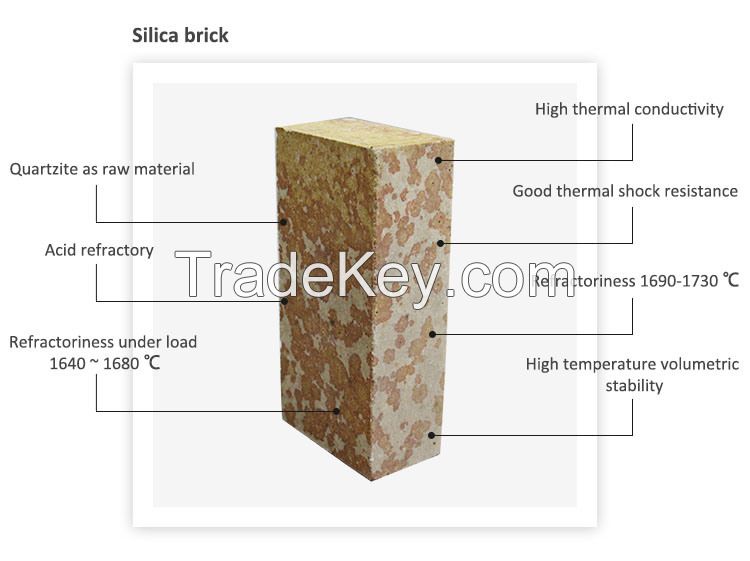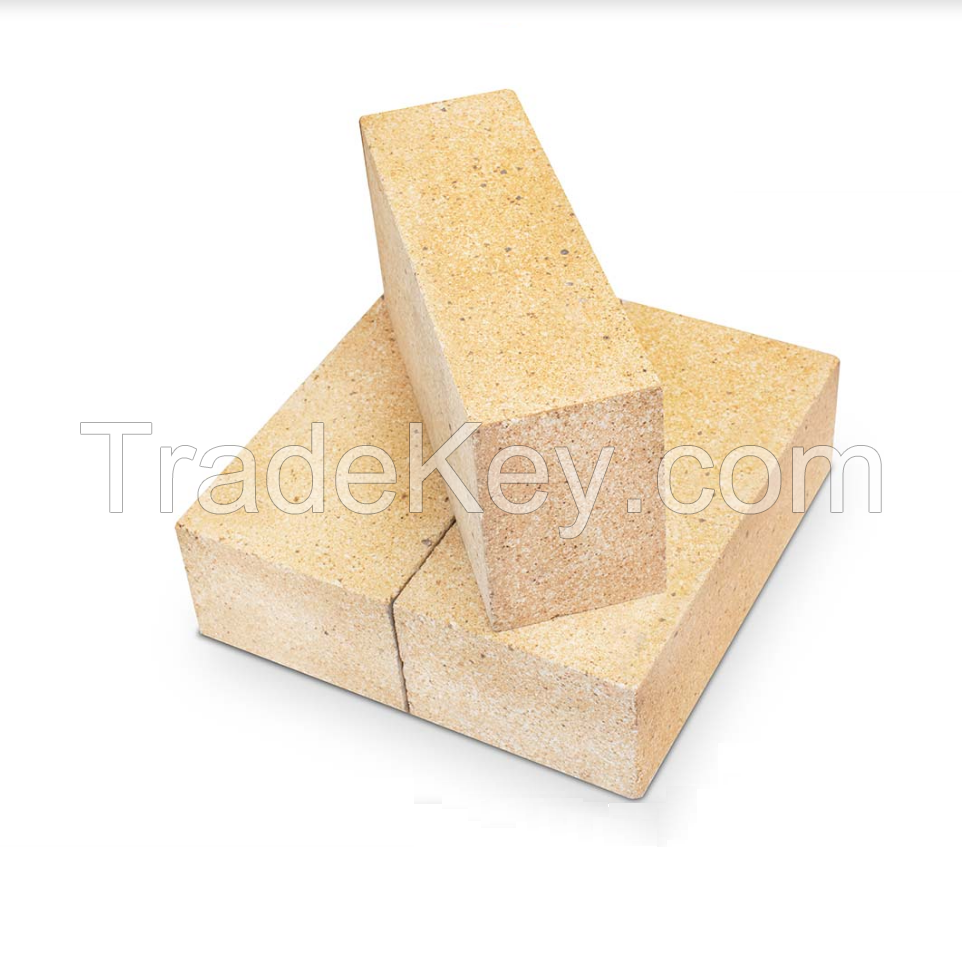




Precio FOB
Obtener el precio más reciente|
- Minimum Order
País:
China
N º de Modelo:
-
Precio FOB:
Lugar de origen:
-
Precio de pedido mínimo:
-
Cantidad de pedido mínimo:
-
Detalle de embalaje:
-
El tiempo de entrega:
-
Capacidad de suministro:
-
Tipo de pago:
-
Grupo de productos :
-
Persona de contacto Kyla
Zhengzhou, Henan
Introduction
Silica Bricks (also called silica refractory
brick or silicate firebrick) are made of silica sand material, and
the content of SiO2 is
more than *4%. The Al2O3 content is lower than 1.0%, and the
apparent porosity is under *2%. Silica bricks belong to
acid refractory bricks, which have an excellent
ability to resist acid slag and acid erosion. Silica bricks have
good strength at high temperatures, high refractoriness under a
load of about ********0℃, and a high softening point with
temperature. Additionally, silica
bricks are highly dense and have good heat conduction. The
refractoriness can reach up to ***0°C, making them ideal
high-temperature furnace construction materials. They are normally
used in the iron & steel industry, and the super grade will be
the necessary refractories in the glass industry.
The silica refractories are manufactured in
multiple asymmetric shapes, which are normally keyed or interlocked
with each other by means of tongues and grooves. Silica brick is
widely used in the bottoms and walls of coke
ovens.
Features
Silica refractories consist mainly of
silicon dioxide (SiO2). They
also contain calcium compounds formed from calcium hydroxide, which
is used as a bonding agent.
The fired silica brick contains the
crystalline SiO2 modifications cristobalite, tridymite,
and some residual quartz. During the firing process, the lime
reacts with the finest quartzite components to form wollastonite
(CaO•SiO2).
The matrix also contains very small quantities of calcium ferrite,
hematite, magnetite, calcium olivine, and hedenbergite [calcium
ferrous silicate,ã€CaFe(SiO3)2】, which
are formed from impurities. These crystalline phases are the reason
for the discoloration and spot formation on the fired
bricks.
The transformed coarse grain generally
consists of cristobalite, a proportion of residual quartz
corresponding to the degree of transformation, and very little
tridymite, whereas the fine-grained matrix is enriched with
tridymite, glass, and wollastonite. The density of a fired silica
brick is lowest when the degree of transformation is farthest
advanced and attains the value of 2.*3 g/cm3 with complete
transformation.
Porperties
| País: | China |
| N º de Modelo: | - |
| Precio FOB: | Obtener el precio más reciente |
| Lugar de origen: | - |
| Precio de pedido mínimo: | - |
| Cantidad de pedido mínimo: | - |
| Detalle de embalaje: | - |
| El tiempo de entrega: | - |
| Capacidad de suministro: | - |
| Tipo de pago: | - |
| Grupo de productos : | - |